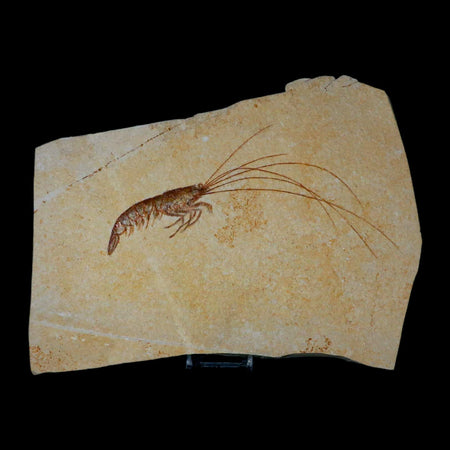4.8" Alethopteris Fern Plant Leaf Fossil Carboniferous Age Llewellyn FM ST Clair, PA
Location: Llewellyn Formation, St Clair, Pennsylvania
Weight: 8.3 Ounces
Dimensions: 4.8 Inches Long, 3.9 Inches Wide, 0.5 Inches Thick (Plate)
Come with a Certificate of Authenticity.
Comes with a Free Stand.
The item pictured is the one you will receive.
Pennsylvanian Age, 300 million-year-old.
Alethopteris Sp Fern Fossil
These plant fossils were found in the Llewellyn Formation (300 mya, Pennsylvanian Period) and are one of the few places where one can find these very detailed white (sometimes yellow) ferns on a striking contrast of black shale. The plants died and fell into the swamp, wherein in a low temperature, pressure, and oxygen environment the plant tissue was slowly replaced by pyrite (from sulfides). Pyrophyllite (aluminum silicate, a whitish mineral) is believed to have replaced the pyrite at a later stage as the sediments piled up and the temperature and pressure became greater. The ferns most commonly found are Alethopteris, Neuropteris, Pecopteris, and Sphenophyllum.
Fossil Plants are generally Carboniferous in age or younger. Some of the most common types of fossil plants include ferns, horsetails, and club mosses. At the end of the Carboniferous, the tree-shaped clubmosses and horsetails declined, mainly because the swamps were disappearing and because it became colder on Earth. Still, there were some coal swamps in the earliest part of the Permian. In that region coal seams combined with plant layers and root, layers have been formed in the same way as the Carboniferous.
Excellent fossils are generally easy to collect from layers of thinly laminated shales, which split open with the tap of a chisel or a splitting hammer. Some entire families of plants are now extinct, such as Macroneuropteris.


















